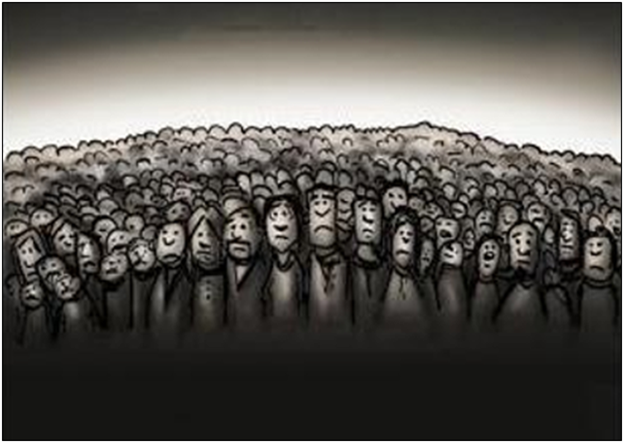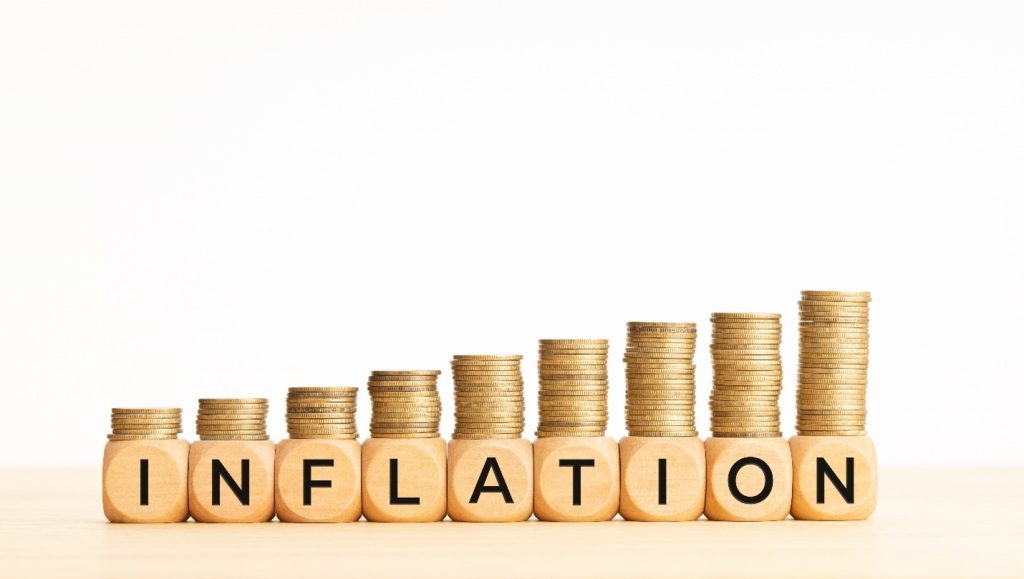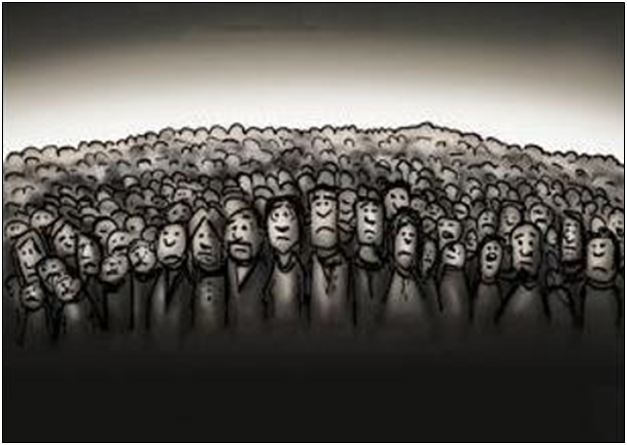April 5, 2022
Permission to republish original opeds and cartoons granted.
After Covid, it’s time for restaurants to sink or swim without more bailouts from Congress

By Robert Romano
This week, the House of Representatives will be considering legislation to reauthorize the Restaurant Revitalization fund, which would be increased $70.6 billion from its current level of $28.6 billion. The fund has been exhausted for eight months now and was originally a part of President Joe Biden’s $1.9 trillion stimulus bill last year.
Dubbed the “Relief for Restaurants and other Hard Hit Small Businesses Act of 2022,” the bill comes at a time when labor markets have been booming and the economy has largely reopened from the Covid pandemic. It seems out of touch and out of place because it is.
Specifically, of the 25.5 million jobs that were lost to Covid by April 2020, 25.1 million have been recovered, according to data compiled by the Bureau of Labor Statistics. Heck, more than 16 million of them had been recovered by the end of 2020. The recovery at that point was already well underway.
During the state and local economic lockdowns at the height of the pandemic, yes, programs like the Small Business Administration’s Paycheck Protection Program of forgivable loans created by Congress were designed to help small businesses keep making payroll at a time when no customers were really expected.
Today, things are a lot different. Covid cases and fatalities continue falling dramatically with the less deadly variants. There are no more lockdowns. Restaurants are open.
In fact, of the 6 million food service jobs that were lost to Covid, almost 5.2 million of them have been recovered, at a present rate of about 100,000 food service jobs being recovered every single month, including and critically the past eight months when the Restaurant Revitalization Fund was already exhausted. The fund’s exhaustion hasn’t halted or even slowed down the recovery at all.
Here’s the kicker: The funds being requested now are simply to fill the backlog of applications — from 2020 — of businesses that did not apply in time to qualify for the funds. They may be entities no longer in existence, but would still qualify under the postdated extension of the program.
According to U.S. Rep. Earl Blumenauer (D-Oreg.), the lead sponsor of the legislation, speaking in September: “I’ve introduced legislation to add $60 billion to the Restaurant Revitalization Fund, enough to cover all outstanding applicants. We’ve already secured more than 200 bipartisan cosponsors, but time is ticking. We need to act now before it’s too late.”
Since then, almost 1 million food service jobs have been recovered — without any further assistance from Congress needed.
Now, Sen. Rand Paul (R-Ky.) is demanding accountability. In Aug. 2021, Paul objected to a unanimous consent resolution in the Senate that would have added the monies into the fund. And in Feb. 2022 he demanded the Small Business Administration turn over records of the original applications of the program, writing, “Despite the program window closing seven months ago, this Committee does not have sufficient information regarding the current applicant queue and their funds requested to aid business losses.”
That was just a month ago. And yet, despite lacking key information about the program’s efficacy and the queue of applications that were never considered before the program ran out of money, and the continued recovery in labor markets, now the House is moving full speed ahead to replenish the fund — just because.
Instead, the reality is that the business model for restaurants is a lot different than it was pre-Covid. There’s a lot more deliveries now. A lot more take out. It’s time to adapt. And for sit-in restaurants that still cannot make a profit despite everything being reopened, sorry, but it’s time to sink or swim. The pandemic is over.
Robert Romano is the Vice President of Public Policy at Americans for Limited Government.
To view online: https://dailytorch.com/2022/04/after-covid-its-time-for-restaurants-to-sink-or-swim-without-more-bailouts-from-congress/
Video: Time for Congress to realize Covid is over

To view online: https://www.youtube.com/watch?v=4jv3LZtgr_4
The personal effects of inflation and how it creates recessions

By David Potter
Historically speaking, high inflation—greater than 5 percent—has always preceded many of the recessions in the United States. The causality follows a simple chain of events. Household budgets for items such as housing, food, and energy are fixed — or at least rigid — for most Americans. When these costs rise, income must be reallocated to these three categories from different areas of one’s budget such as entertainment, travel, and other non-essentials.
Unfortunately, with overall inflation up 7.9 percent the last twelve months — the worst since 1982 — it is reasonable to expect Americans will begin to restrict their spending and enter survival mode.
Housing costs have been on the rise for years after falling during the financial crisis. 2021 was exceptionally expensive for renters and homebuyers. The national average cost of rent was 10.1 percent higher in 2021 than in 2020. Additionally, rent costs grew 5 times faster in 2021 than 2020. Even more shocking, the national average of home prices increased 19 percent in 2021. In the 50 years since this metric has been tracked, a yearly increase like this has never happened before. Combine this with the fact that the dollar lost 4.7 percent purchasing power last year and you have a recipe for impending economic and financial trouble.
Personally, my rent has increased 7.7 percent from last year. Witnessing one’s salary become less useful is demoralizing. During the last major recession in 2008, I was 18, in college, and very poor even for a college student’s standards. Living off campus, I vividly remember not being able to socialize as much as I’d like outside of class as my beater Chevrolet costed too much to fill the tank. Ramen noodles became an even larger staple of my diet.
Now, in my early 30s, the 2021 inflation hits different. The inflation from the 2008 financial crisis most substantially affected my day-to-day living. Today, the major impact of the 2021 inflation is on my future. As with most Americans my age, my current ability to invest, save for retirement, save for a home down payment, and pay off student loan debt has been decreased. It’s not that I can no longer do these things, but the speed at which I can achieve financial milestones has been diminished.
While housing is typically the most expensive item in a person’s or family’s budget, the 2021 increase in food costs was substantial. Prices for at home food increased 7.4 percent and prices for food away from home increased 6.4 percent. Even more expensive, the price of meats, poultry, fish, and eggs rose 12.2 percent.
While inflation greatly impacts the prices of gas and housing, it also makes groceries more expensive. For American families, this can be a serious problem, as food is often in the top 5 expenses in the household budget. During times of economic recession, inflation can be a major contributing factor to rising poverty rates. This is because families must spend more of their income on basic necessities like food, leaving less money for other essentials like healthcare and education.
For me, I’ve still been able to buy all the foods I regularly consumed in 2020 and 2021, but I have had to trim my budget in other areas to continue to do this. Boneless, skinless chicken breasts is one of my favorite simple, healthy meats to eat. In my area, the cost of 3 pieces (1.5 pounds) increased from $7 to $9.50. My favorite caffeinated beverages such as cold brew coffee (privileged, I know) increased as much as 20 percent. Even though I am unhappy about the increased prices, economic downturns and inflation force me to remember that life is easier in America (for most people) during the bad times than it is during the best of times in some poor, less fortunate countries.
Perhaps one of the most apparent signs of inflation is the 40 percent price increase of gas. Historically, it’s common for inflation and the cost of crude oil to be positively correlated. One contributing factor is the increased transportation costs of fuel and energy during inflation. Natural gas costs rose 23.9 percent in 2021. Electricity prices rose 10.7 percent. As a result, people will travel less and reconsider their thermostat settings at home. Less travel in general equates to brick-and-mortar businesses receiving less traffic and income.
Thankfully, the cost of my lease covers electricity, so I haven’t had to make any drastic changes there. Gas, however, is a different story. I am now less likely to go explore new places within my region of the state and within my city. I am also more hesitant to plan long-distance trips to visit family and friends. I miss the gas prices of the Trump days. I could go exploring with less guilt and not thinking about it as much.
In summary, inflation is the gradual loss of purchasing power of a currency. Inflationary effects can be seen in the prices of goods and services, which rise over time as the currency loses value. The financial pressure created by inflation forces average Americans to decrease their spending.
It’s happening right now. Less spending means less money re-entering the economy. Before we know it, as consumer spending takes a hit prices stayed too high for too long, soon businesses will be laying people off and some even closing their doors — leading to the next recession.
David Potter is a contributing editor at Americans for Limited Government.
To view online: https://dailytorch.com/2022/04/the-personal-effects-of-inflation-and-how-it-creates-recessions/

No more Covid bailouts for Restaurant Revitalization Fund
April 4, 2022, Fairfax, Va.—Americans for Limited Government President Rick Manning today issued the following statement calling on Congress to reject any reauthorization of the Restaurant Revitalization Fund:
"Congress needs to stop Covid spending now. The crisis is over and additional spending to bail out restaurants again will only accelerate inflation, which is already eating a hole through American paychecks.
"Americans for Limited Government supported the original small business forgivable loans program in 2020 when government policies shut down those companies with no other recourse for them to survive, but 2022 is a different time. The economy is open. Many restaurants are still struggling, but it is largely because the business model and the restaurant industry have changed after Covid, including experiencing labor shortages. Consumers have become used to food delivered to their homes. Some remain uncomfortable eating in a restaurant setting, and these factors may become permanent.
"Unfortunately, those restaurants unable to adapt to consumer expectations in 2022 may fail. However, the resulting damage to the economy from more spending and the inflation it creates impacts every business and every American, and the time to end it is now. If Congress wants to do something to stop inflation now, they need to stop spending on frivolous special interest bailouts. That will do more to help restaurants and other small businesses to survive than another D.C. helicopter money program."
To view online: https://getliberty.org/2022/04/no-more-covid-bailouts-for-restaurant-revitalization-fund/



